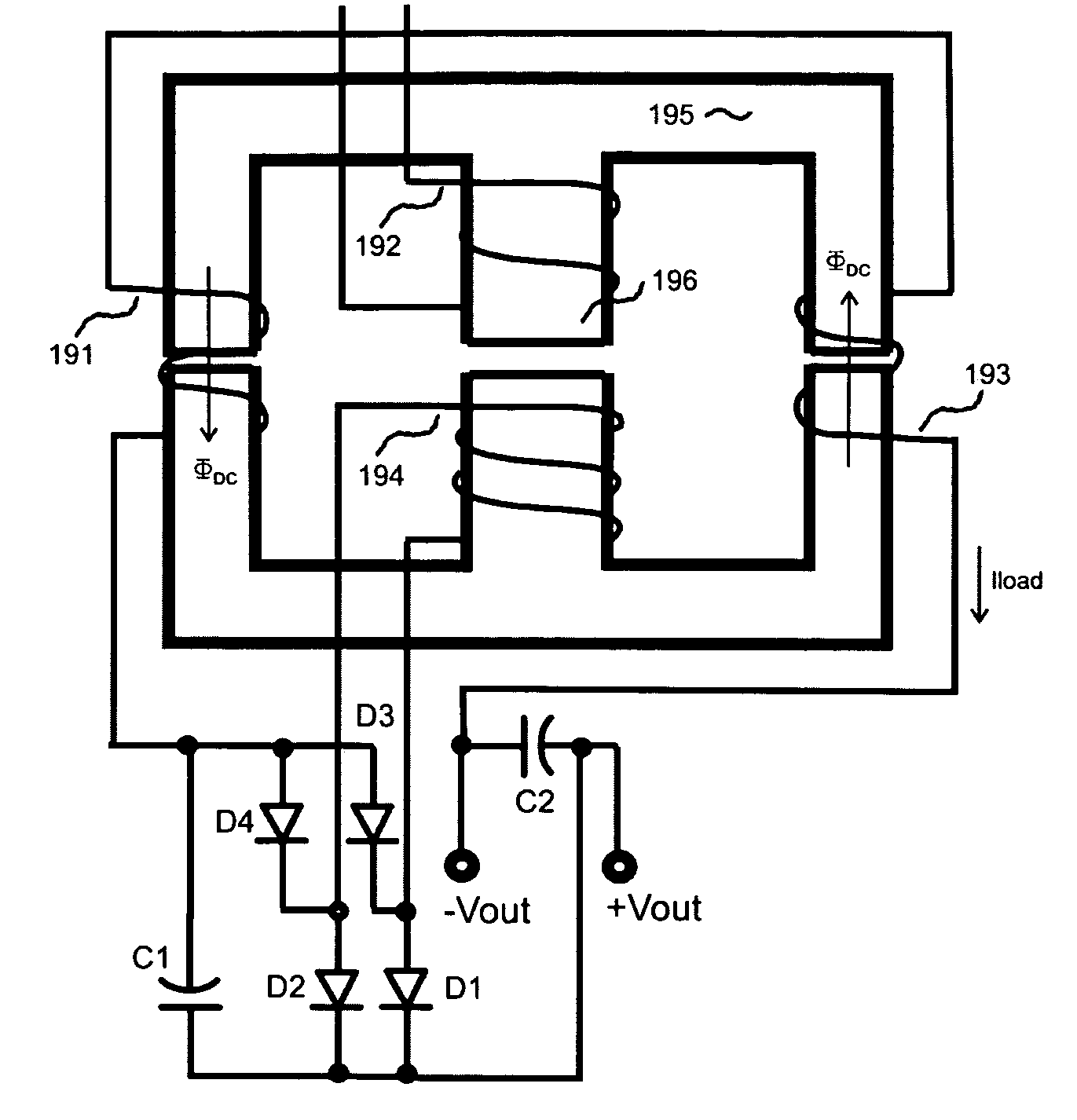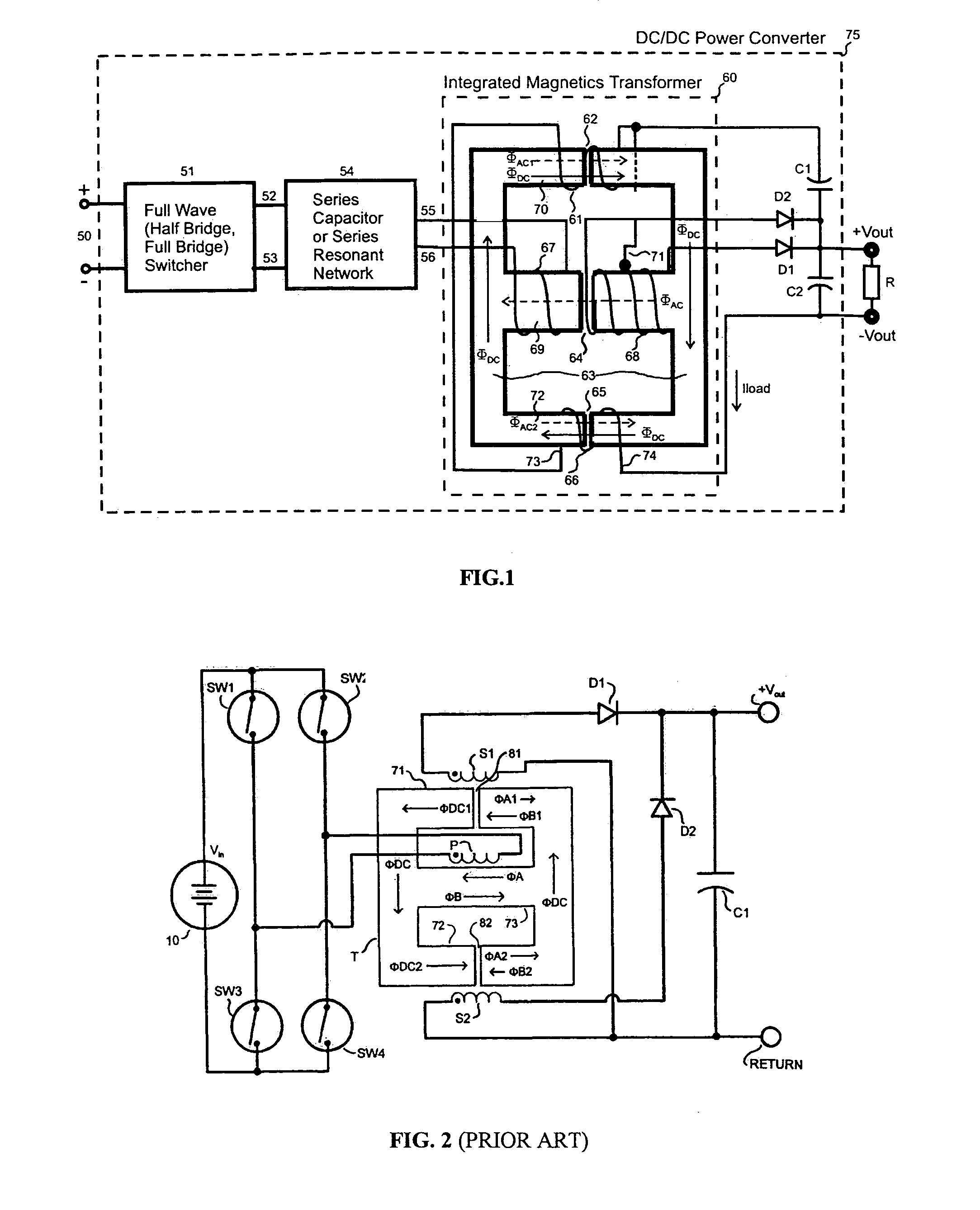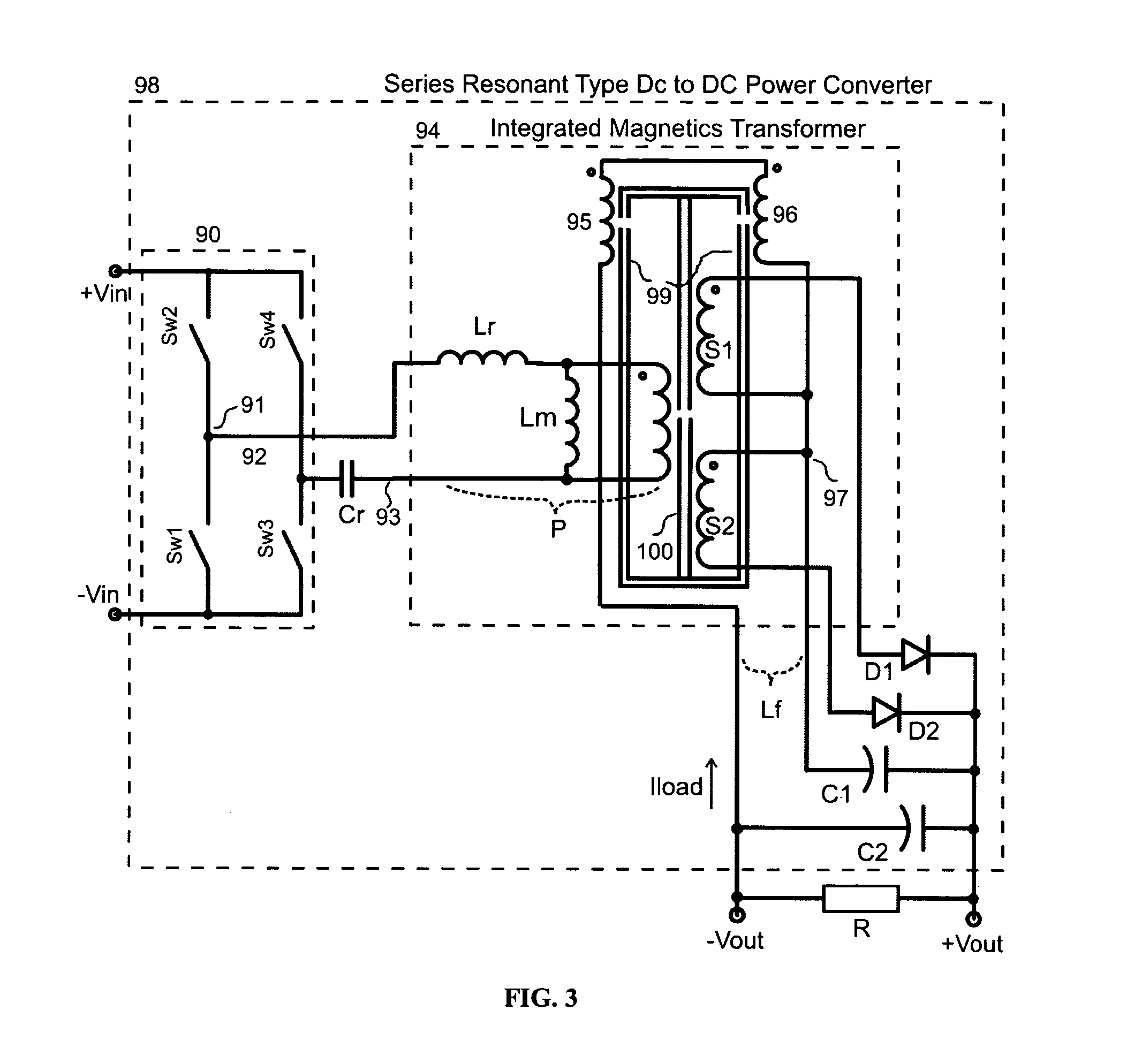Full wave series resonant type DC to DC power converter with integrated magnetics
a technology of magnetic field, which is applied in the direction of electric variable regulation, process and machine control, instruments, etc., can solve the problems of inconvenient dc to dc power converter series resonant type, the bulkiest and most expensive component of the circuit, and the need to double the number of turns of the secondary winding, so as to improve the density of the power converter and reduce the manufacturing cost.
- Summary
- Abstract
- Description
- Claims
- Application Information
AI Technical Summary
Benefits of technology
Problems solved by technology
Method used
Image
Examples
Embodiment Construction
[0029]A schematic of the preferred embodiment of a DC to DC converter embodying the principles of the invention is shown in FIG. 1. A full wave switcher 51, containing controlled switching elements arranged in either half bridge or full bridge configuration is connected to a low impedance dc-source 50. The switching elements in the switcher are consequently turned on and off with 50% duty cycle and their switching frequency is controlled, so that switcher 51 produces square-wave voltage with 50% duty cycle and controlled frequency on its terminals 52 and 53. This square-wave voltage is then applied in series with a capacitor or series resonant network 54 and the resulting voltage between terminals 55 and 56 is then applied to primary winding 67 of an integrated magnetics transformer 60 arranged on an E-shape magnetic core 63. The number of turns of primary 67 is selected so that the ac (alternating current) magnetic flux ΦAC generated by the primary winding 67 provides an optimum bo...
PUM
| Property | Measurement | Unit |
|---|---|---|
| saturation flux density | aaaaa | aaaaa |
| magnetic | aaaaa | aaaaa |
| reverse magnetic polarity | aaaaa | aaaaa |
Abstract
Description
Claims
Application Information
 Login to View More
Login to View More - R&D
- Intellectual Property
- Life Sciences
- Materials
- Tech Scout
- Unparalleled Data Quality
- Higher Quality Content
- 60% Fewer Hallucinations
Browse by: Latest US Patents, China's latest patents, Technical Efficacy Thesaurus, Application Domain, Technology Topic, Popular Technical Reports.
© 2025 PatSnap. All rights reserved.Legal|Privacy policy|Modern Slavery Act Transparency Statement|Sitemap|About US| Contact US: help@patsnap.com



